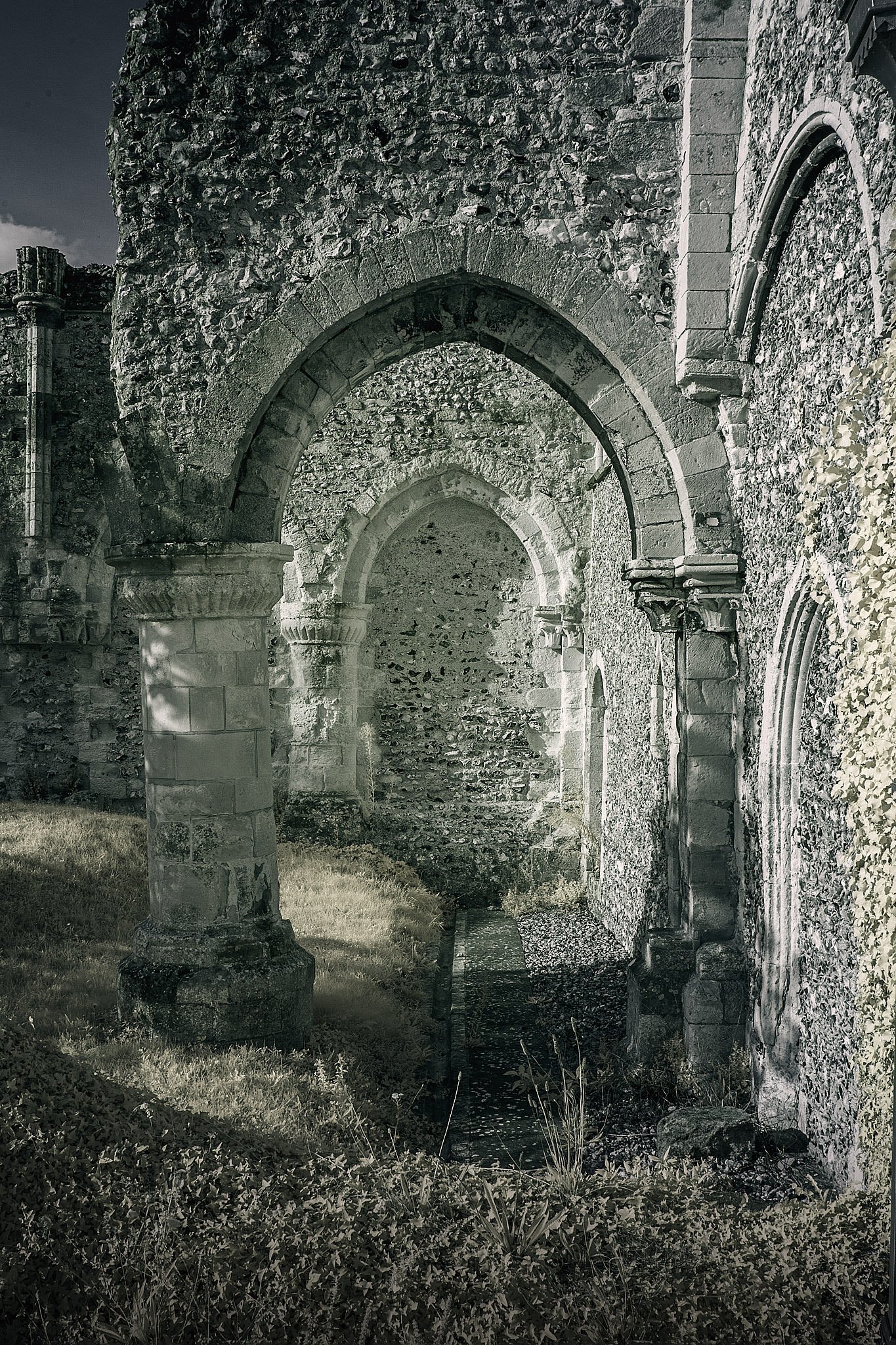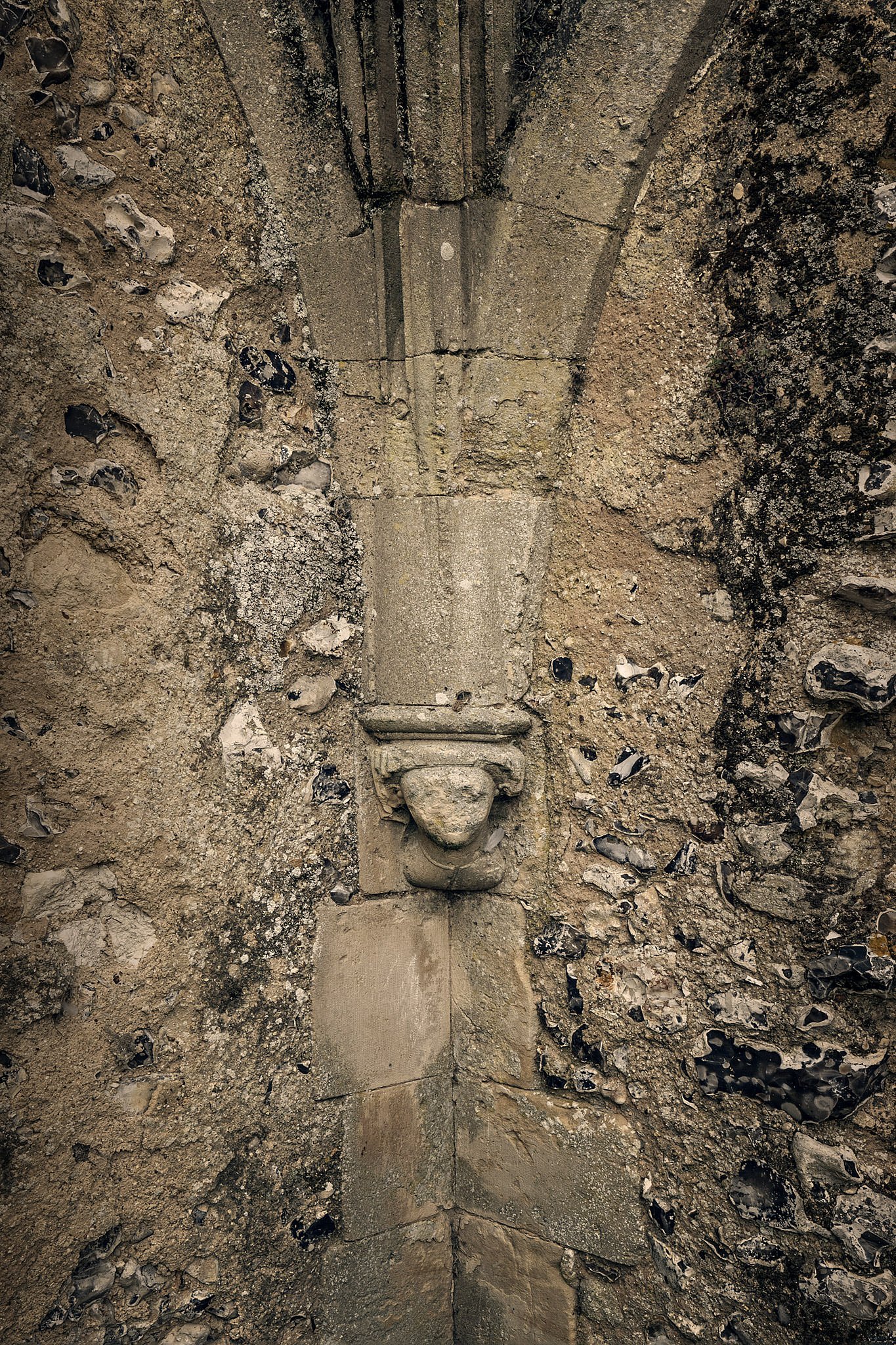Boxgrove Priory, South East,England






Little remains of Boxgrove Priory today, although its setting does not seem diminished by the passing of time. The largest building on the site is the dormitory, which still stands to nearly its full height. Other remains include part of the chapterhouse and traces of the cloister. The Parish Church at Boxgrove today, was originally built in the reign of King Henry I as the church of the Benedictine Priory, although it has been greatly altered since this time. There was a church on this site before the priory was founded, as the Domesday book tells us that the clerks of the church at Boxgrove held one hide of land. The church itself was built in the early 12th Century but its tower wasn’t added until the end of the 12th Century, with the porch being added in the 14th century.
King Henry I granted the estate of Halnaker to Robert de Haye in 1105. Shortly afterwards, Robert de Haye donated money to the Benedictine Abbey of Lessay in Normandy, the church of Boxgrove, and two and half hides of land for the foundation of a daughter house to be established at Boxgrove. The church was dedicated to St. Mary and St. Blaise. St. Blaise was the 4th Century Bishop of Sebaste in Armenia. Along with de Haye’s donation of land, he also endowed the church with the tithe of the parish.
The church was built around 1117-1120, at this time the priory was begun with only three monks. Robert de Haye’s daughter, Cicely, made further gifts to the Priory so that they could increase their numbers from 3 monks to 6. Cecily married Robert of St. John, and together they had two sons, William and Robert, who were also benefactors of the priory, giving endowments which allowed the priory to further increase their numbers to 13 monks to be maintained, which was again increased to allow for the maintenance of 15 monks at the priory. This type of long-standing endowments, by one family, was typical of medieval upper-class families. They had a tie to this monastery because a relative had founded it, or had links with the establishment, and the family members would give their continued support to the foundation through generations.
When further funds were granted to the priory by the de Haye’s-St. John family, it was for a 16th monk to be added to the priory, with the agreement that this monk was to act as Chaplain at their own home at Halnaker House, where he would live while the Lord was in residence only. At other times, this monk would live with the rest of the brethren at Boxgrove. In 1275, Robert Kilwardby, the Archbishop of Canterbury, visited Boxgrove priory and afterwards issued a series of injunctions he felt were required to reform the brethren. He stated that the rule was lax, and that the monks were living too well and eating flesh which was only to be allowed under strict conditions. They were also found to be wearing brown robes and not black according to the Benedictine rule. He also pointed out that there was an issue with the monk who had been appointed to serve at Halnaker House, he was found to stop and gossip on his way, both there and back.
It was quite common in the 11th and 12th Centuries for monasteries to have links to establishments on the continent. This certainly made sense when the English King also ruled Normandy, and had large territories in what later became parts of France. Once these territories were lost however, it was much more difficult. Boxgrove’s actual connection to Lessey Abbey in Normandy had only ever been slight. While Lessey Abbey had the right to fill up any vacancies in the number of monks, up to 15, if the priory did not supply them, it could also demand the services of any of the brethren, with the exception of the sub prior and cellarer, for which it received an annual payment of three marks. At the end of the 13th Century, the Abbey tried to break with the custom of the priory of electing their own head, and they sent over a candidate from Lessey to be the new prior, but the Bishop of Chichester refused to institute him and confirmed the election of a monk from the brethren of Boxgrove. This action would later help the priory at Boxgrove greatly, when the suppression of French Abbeys was instituted in the reign of Edward III and during the Hundred Years war.
This anti French feeling was at the heart of the discrimination of the ‘alien’ monastic establishments. It is often forgotten that hundreds of years before Henry VIII’s dissolution of the monasteries, the English kings were dissolving monasteries linked to French houses while they were at war with France, and also needed funds to support those wars. Monastery estates could be confiscated if they were connected to French establishments, and royal officers would then be appointed to run them. Some houses broke their ties with France at this time and went it alone, others were dissolved. Boxgrove was in danger of being supressed as a small daughter house of Lessay Abbey in Normandy. It was charged with being an ‘alien’ house when, in 1337, it was ordered to pay £60 and an annual sum of £30. This was a heavy penalty when the income of Boxgrove in 1291 was just £24 annually. The brethren pleaded that all its members were English, and that it had always had the right to elect its own head, as evidenced by the intervention of the Bishop of Chichester previously. The petition was granted. However, during the reign of Richard II it was charged again, and again it had to fight for its survival and won its case. It was granted independence from Lessay Abbey in 1383.
The parish church for the town was served by a Vicar who was appointed by the priory. In 1409, there was an issue with this Vicar, Henry Bewterer, and the brethren of Boxgrove. The monks of Boxgrove alleged that the Vicar had been disloyal and possibly dishonest towards them. They claimed that when he was appointed, he had sworn fealty to the Priory and that all oblations and offerings made at the Parish Altar belonged to the Priory, and were not to be taken by the Vicar, who they clearly thought was taking the money for himself. They also alleged that this Vicar would not help the monks at services, and refused to join in the processions or celebrate Vespers with them on certain high festivals. They also seem to have been arguing about who had the right to tythe of the garden herbs. The issues were brought to the Bishop of Chichester who, through his commissioners, decided the outcome and decreed that the offerings from the Parish church belonged to the priory, and that the Vicar is bound to support and aid the house. However, the Vicar was to receive a special place in the processions, and a stall assigned to him in church. The commissioners also stated that coleworts and onions only are included in the garden herbs, and the Vicar can only claim his tithe of these.
In the year 1518, there were also some issues at Boxgrove, when the Bishop of Shereburne issued a series of injunctions which state that the full number of monks were to be maintained, as the numbers had fallen. In 1478 we know there were only 10, but by 1524 there were 12 monks at Boxgrove. Bishop Shereburne also ordered that they appoint a master of the novices, to train novice monks for a life under the rule of St. Benedict. The Priory was also to be made ready to exercise hospitality to strangers and wayfarers. He also ordered provisions to be made for the health and comfort of the community. Their dormitory was to be well lit and cleaned. Women were who were employed in the dairy and the laundry, were to be of good character. No unnecessary servants were to be employed, and the accounts were to be kept with greater regularity. The prior, who was said to have a reputation as a good archer, was told that this was a waste of time. The Prior was forbidden from shooting matches outside the walls of the Priory, and he was not to keep dogs, birds, or hawks, who thereby use food which might be given to the poor. The brethren were not to play cards or go hunting, they were to prevent gossip and drinking when people gathered at funerals. These injunctions of 1518, as set out, give us a glimpse of why it was argued that the monasteries should be dissolved. It may have actually happened because Henry VIII wanted a new wife, but it was accepted because people knew that many of them had lost their old high ideals, and were living the life of the country gentleman.
When King Henry VIII decided to dissolve the monasteries, it was the poorest houses that went first. Commissioners were first sent by the King to enquire into the conduct of these houses, although it seems no attention was ever paid to these reports, as all the smaller establishments were dissolved. Despite the King’s motivation, many people now saw these establishments as outdated and no longer useful. It was the monasteries links with noble patrons that might have helped them, as we can see in a letter written by Thomas West, Lord La Warr, who’s wife’s family was descended from Robert de Haye the founder of Boxgrove. In his letter to Thomas Cromwell, to ask for an exemption from the King for Boxgrove, he states that he has created a chantry chapel in the church, where he intends to be buried. He states:
‘And so hyt ys that I have a power howse called Boxgrave very near to my power howse called Halnaker, whereof I am patron, and there lyeth many of Auncytorys, and also my wyffy’s mother, and for cawse hyt ys of my foundacyon and that my paryshe churche ys under the roofe of the churche of the said monastery, and have made a power chapel to be buryed yn wherefor yf yt myght stande with the Kynge’s gracy’s pleasure for the power service that I have doyn his Highness to forbere that subpressynge of the same.’
We don’t know if Lord La Warr’s letter to Cromwell was answered, but it certainly wasn’t acted upon. When Boxgrove Priory was dissolved, there were 8 monks, in priests orders, living at the priory, and one novice. There were also 28 servants and 8 children. The number of children suggests that there may have been a school connected to the monastery. The priory also housed 6 poor persons under its roof, who received ¼ d a day for sustenance. Once the priory was suppressed, all of its contents were sold. We have no record of what the contents were, as we are only given the weight of the precious metal and the price obtained for it. The silver amounted to 339 ounces, which comprised pure silver, silver parcel gilt and silver gilt, which sold for £65 3s. 1d. The ornaments from the church were sold for £23 13s. 2s. and the lead from the church would also have been sold. Once this was gone, the buildings would become little more than a public stone quarry. Religion aside, it is hard not to be saddened by the sheer destruction of the books, works of art, architecture, embroidery and ornaments, which had been painstakingly created.




